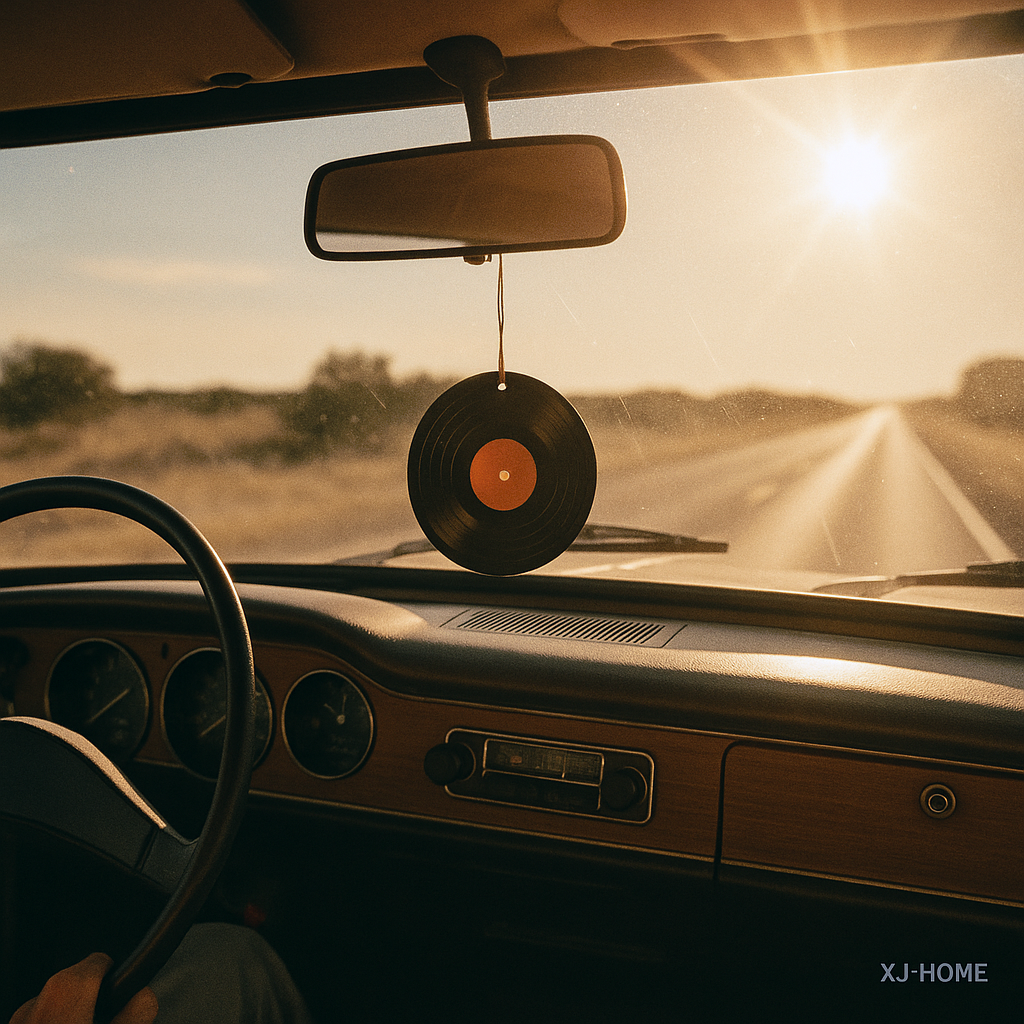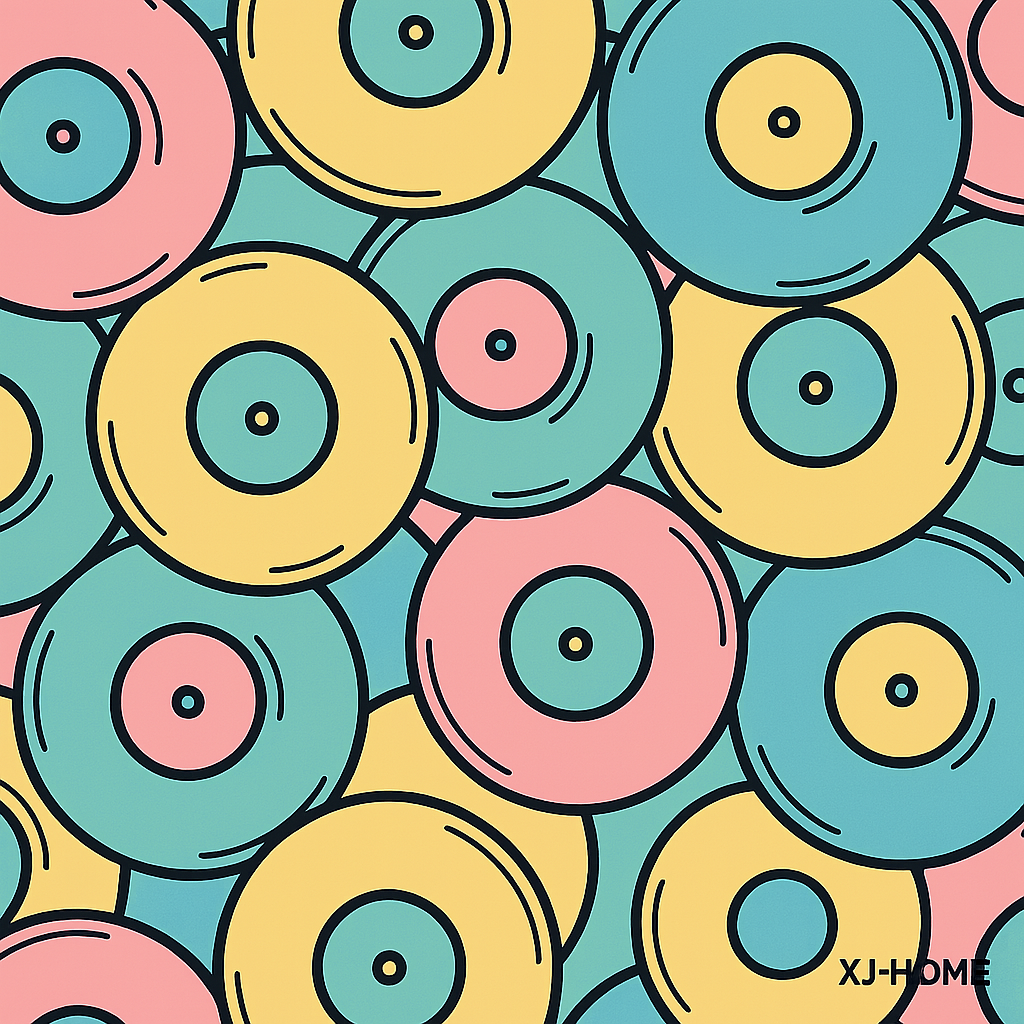The world of vinyl is rich, rewarding, and sometimes a little perplexing. Whether you're just starting your analog journey or looking to deepen your understanding, questions inevitably arise. From setup and troubleshooting to choosing the right gear, we've compiled some of the most frequently asked questions about record players and vinyl culture. Our aim is to provide clear, insightful answers, moving beyond surface-level advice to help you get the most out of your listening experience.
I. Getting Started: The Basics & Setup
Q1: What exactly is a phono preamplifier (phono stage) and why do I absolutely need one?
A phono preamplifier is a critical component in any vinyl playback system. It performs two essential functions:
-
Gain (Amplification): The electrical signal produced by your turntable's cartridge is incredibly weak – mere millivolts (mV) for Moving Magnet (MM) cartridges and even less for Moving Coil (MC) types. This signal is far too low to be used directly by your main amplifier or powered speakers. The phono preamp boosts this tiny signal to a standard "line level," making it robust enough for your amplifier to work with.
-
RIAA Equalization: When records are mastered and cut, the bass frequencies are reduced, and treble frequencies are boosted. This is done for technical reasons: to prevent bass grooves from being too wide (allowing more music per side) and to overcome surface noise at higher frequencies. This standardized curve is called the RIAA (Recording Industry Association of America) equalization curve. The phono preamp applies an inverse RIAA curve during playback, precisely boosting the bass and cutting the treble to restore the music's original tonal balance. Without it, records would sound thin, tinny, and completely wrong.
(For a deeper dive, check out our post: "Record Player Setup: Choosing the Perfect Preamp")
Q2: My turntable (or amplifier) has a "PHONO" input or a built-in preamp. Is that enough, or should I get an external one?
Many modern turntables and some integrated amplifiers include a built-in phono stage.
-
Pros of Built-Ins: They are convenient (plug-and-play) and cost-effective. For many entry-level to mid-tier systems, they are perfectly adequate.
-
Cons of Built-Ins: The quality can vary significantly. In budget equipment, the built-in phono stage is often an area of compromise and may not offer the lowest noise or highest fidelity. They also typically lack the flexibility (like adjustable gain or loading) needed for more advanced cartridges, especially Moving Coil types.
The Iconoclastic Truth: While a built-in phono stage is a great starting point, if you're serious about vinyl, an external phono preamp is often one of the most impactful upgrades you can make. Even affordable external units can offer superior sound quality due to better components, dedicated power supplies, and improved isolation from electrical noise within your turntable or amplifier.
(See "Record Player Setup: Choosing the Perfect Preamp" for more details.)
Q3: What's the difference between Moving Magnet (MM) and Moving Coil (MC) cartridges?
These are the two main types of phono cartridges, and they generate their electrical signal differently:
-
Moving Magnet (MM): A tiny magnet (or magnets) is attached to the cantilever (the arm holding the stylus). As the stylus tracks the record groove, this magnet moves within fixed coils inside the cartridge body, inducing the electrical signal.
-
Characteristics: Higher output voltage (typically 2mV - 5mV), generally less expensive, styli are often user-replaceable. They require a standard phono input impedance of 47,000 ohms (47kΩ).
-
-
Moving Coil (MC): Tiny coils are attached to the cantilever, and these move within the field of a fixed magnet system inside the cartridge body.
-
Characteristics: Much lower output voltage (Low-Output MCs are typically 0.1mV - 0.5mV; High-Output MCs are closer to MM levels but still distinct). Often more expensive, renowned for detail retrieval and dynamic range. Styli are usually not user-replaceable (the entire cartridge is often "retiped" by specialists). LOMCs require significantly more gain from the phono preamp and benefit from adjustable input impedance (loading).
-
Crucial Point: You cannot plug a Low-Output MC cartridge into a standard MM phono input without a step-up transformer (SUT) or an MC-capable phono preamp. The sound will be far too quiet.
(This is also covered in "Record Player Setup: Choosing the Perfect Preamp")
Q4: How do I properly set up my new turntable? What are VTF and Anti-Skate?
Proper setup is crucial for both sound quality and record care. Key adjustments include:
-
Leveling: Your turntable must be on a perfectly level and stable surface. Use a small spirit level on the platter.
-
Vertical Tracking Force (VTF): This is the downward pressure the stylus exerts on the record groove. It's set using the tonearm's counterweight.
-
Too little force, and the stylus will mistrack, causing distortion and skipping.
-
Too much force, and you'll get premature record and stylus wear.
-
Always follow your cartridge manufacturer's recommended VTF range (e.g., 1.5 - 2.0 grams). A digital stylus force gauge is highly recommended for accuracy.
-
-
Anti-Skate (Bias Compensation): As the stylus tracks across the record, friction creates an inward-pulling force on the tonearm. Anti-skate applies a gentle outward counter-force to keep the stylus centered in the groove.
-
This promotes even stylus wear, balanced channel output, and reduces distortion.
-
A common starting point is to set the anti-skate dial to the same value as your VTF. Fine-tuning can be done with a test record.
-
-
Cartridge Alignment (if not pre-installed): Ensures the stylus is correctly oriented in the groove to minimize tracking error. This usually involves a protractor. Most entry-level turntables come with pre-aligned cartridges.
Q5: Do I need to ground my turntable? How?
Yes, in most cases. Turntables often have a separate thin ground wire (usually with a small spade lug). This wire should be connected to the dedicated "GND" (ground) terminal on your phono preamplifier or amplifier (if it has a phono input).
-
Purpose: Proper grounding helps to eliminate or reduce hum and buzz, which are common issues caused by ground loops or electrical interference picked up by the sensitive phono signal.
-
If no dedicated wire: Some turntables ground through the RCA cable shields. If you experience hum and there's no separate ground wire, consult your turntable manual. Sometimes, connecting a wire from a metal part of the turntable chassis to your preamp's ground can help.
II. Sound Issues & Troubleshooting
Q6: Help! My record player is humming or buzzing loudly.
This is a very common issue. The usual suspects are:
-
Grounding: Check that the turntable's ground wire is securely connected to your phono preamp or amplifier's ground terminal.
-
Cable Issues: Poorly shielded or damaged RCA cables between the turntable and preamp can pick up interference. Try a different, well-shielded pair. Ensure RCA cables are not running parallel to power cords.
-
Component Placement: Move your turntable and phono preamp away from other electronic devices (especially those with large transformers, Wi-Fi routers, dimmer switches).
-
Cartridge Wires: Ensure the tiny wires connecting to your cartridge pins are secure and not corroded.
-
Ground Loops: If multiple components in your audio system have different ground paths, a loop can form. Try plugging all audio components into the same power outlet or strip.
(Refer to our "How to Troubleshoot Common Turntable Issues" guide for a more detailed breakdown.)
Q7: Why are my records skipping?
Skipping can be caused by several factors:
-
Dirty Record: The #1 culprit. Clean your records!
-
Dirty or Worn Stylus: A gunked-up or worn-out stylus won't track properly. Clean it or replace it.
-
Incorrect VTF: Usually, the tracking force is set too light.
-
Incorrect Anti-Skate: If set too low, the stylus can jump inwards.
-
Turntable Not Level: Gravity will pull the tonearm, causing skips.
-
External Vibrations: Footfalls or nearby speakers can cause skips. Ensure your turntable is on a stable surface or consider a wall shelf.
-
Warped Records: Severe warps can make tracking impossible.
(Our troubleshooting guide covers this in depth.)
Q8: The sound from my turntable is distorted, muffled, or just "wrong." What's going on?
Distortion can manifest in many ways. Check these:
-
Dirty Record or Stylus: Always the first things to check.
-
Incorrect Cartridge Alignment: If the cartridge isn't aligned correctly in the headshell, the stylus won't sit properly in the groove, leading to distortion, especially towards the inner grooves.
-
Incorrect VTF or Anti-Skate: Mistracking due to these settings will cause distortion.
-
Phono Preamp Issues:
-
Wrong Input: Plugging a turntable directly into a line-level input (AUX, CD) without a phono preamp results in very quiet, tinny sound.
-
Double Preamping: If your turntable has a built-in preamp AND you plug it into your amplifier's PHONO input (which also has a preamp), the signal is over-amplified, causing loud, distorted sound. Ensure only one phono stage is in the signal path.
-
-
Worn Stylus: A stylus has a finite lifespan. Once worn, it will sound dull, distorted, and can damage records.
III. Record & Turntable Care
Q9: How often should I clean my records, and what's the best method?
-
Before Every Play: Use a good quality anti-static carbon fiber brush to remove surface dust.
-
Deeper Cleaning: For dirtier records (especially used ones) or for periodic maintenance, a wet cleaning method is recommended. This can range from manual systems using a brush and solution (like the Spin-Clean or Knosti) to vacuum record cleaning machines (RCMs) or ultrasonic cleaners for more serious collectors.
-
Always use a dedicated record cleaning solution and distilled water for rinsing (if applicable). Avoid household cleaners or tap water.
(Our "Record Player Care: Cleaning Tips for Pristine Vinyl" post has comprehensive advice.)
Q10: How do I clean my stylus (needle)?
A clean stylus is crucial for good sound and record longevity.
-
Use a dedicated stylus brush (looks like a tiny, dense paintbrush).
-
Always brush from back to front – the direction the record spins. Never brush side-to-side or front-to-back, as this can damage the delicate cantilever.
-
Do this gently before each listening session or every few record sides.
-
For more stubborn deposits, specialized gel cleaners (you gently dip the stylus into the gel) or, with extreme caution and verification of cartridge compatibility, liquid stylus cleaners can be used.
Q11: How should I store my vinyl records?
-
Vertically: Always store records upright, like books on a shelf. Never stack them flat on top of each other for extended periods, as this can lead to warping.
-
In Sleeves: Keep records in their inner sleeves (anti-static poly-lined ones are excellent upgrades from plain paper) and then in their outer jackets. Protective outer plastic sleeves for the jackets are also highly recommended.
-
Cool, Dry Place: Avoid extreme temperatures, humidity, and direct sunlight, all of which can damage records and their covers.
Q12: When should I replace my stylus?
Stylus lifespan varies depending on the diamond type, tracking force, and how clean your records are, but typical estimates are:
-
Conical/Spherical Styli: 300-500 hours
-
Elliptical Styli: 500-800 hours
-
Advanced Profiles (Line Contact, Shibata, MicroLine/MicroRidge): 800-2000+ hours
Listen for signs of wear: increased distortion (especially sibilance), loss of high-frequency detail, or a generally "dull" sound. If in doubt, and you've clocked significant hours, it's better to replace it. A worn stylus will damage your records.
IV. Choosing Equipment
Q13: What should I look for in a good entry-level turntable that won't damage my records?
Avoid ultra-cheap "suitcase" players. Look for:
-
Adjustable Counterweight (for VTF): Allows you to set correct tracking force.
-
Anti-Skate Control: For proper stylus centering in the groove.
-
Decent Moving Magnet (MM) Cartridge: Often from brands like Audio-Technica. Ensure the stylus is replaceable.
-
Solid Plinth & Platter: To minimize vibration and ensure speed stability.
-
(Recommended) Built-in, Switchable Phono Preamp: For convenience and future upgradeability.
Models from brands like Fluance (e.g., RT80/RT81), Audio-Technica (e.g., AT-LPW30/40 series), U-Turn Audio (Orbit series with relevant upgrades), and Pro-Ject (e.g., Primary E, T1) often provide good starting points in the $200-$400 range.
(See our "Best Cheap Turntables That Don’t Sacrifice Quality" and "The Best Entry-Level Record Players for New Collectors" posts for more.)
Q14: Should I buy a vintage or a modern turntable?
This depends on your priorities:
-
Vintage (late 1960s - early 1980s):
-
Pros: Potential for superb build quality and craftsmanship (especially higher-end models), unique sonic signatures, aesthetic appeal, potential for great value if you find a well-maintained or restorable unit.
-
Cons: Likely needs maintenance/restoration, component aging can affect sound, outdated features, parts can be hard to find, reliability can be inconsistent.
-
-
Modern:
-
Pros: Out-of-the-box performance with warranty, technological advancements (motor control, materials), modern conveniences (built-in preamps, USB), ease of setup, wide availability and support.
-
Cons: Budget models may feel less substantial than vintage counterparts, achieving top-tier vintage build quality can be expensive, some "feature creep" at lower price points.
-
For beginners seeking reliability, a new modern turntable is often a safer bet. For hobbyists who enjoy tinkering, vintage can be very rewarding.
(Our "Vintage vs Modern Record Players: A Comprehensive Comparison" post delves deeper.)
Q15: What's the difference between belt drive and direct drive turntables? Which is better for listening?
-
Belt Drive: The motor is offset and connected to the platter via an elastic belt. This helps isolate motor vibration from the platter and stylus. Traditionally favored by many audiophiles for its potential for lower noise.
-
Direct Drive: The platter is mounted directly on the motor's spindle, or the motor is part of the platter assembly. Offers quick start-up and rock-solid speed stability. Historically dominant in DJing, but modern high-quality direct drive turntables (like those from Technics and Audio-Technica) have gained significant traction in hi-fi for their precision.
Which is better? Both can deliver excellent results. High-quality modern direct drive designs have largely overcome earlier concerns about motor noise. The choice often comes down to specific model implementation and personal preference regarding sonic presentation (some find belt drives "smoother," direct drives "more dynamic" – these are generalizations).
(See "Direct Drive Turntables: Are They Right for You?" for a full exploration.)
V. Taking it Further
Q16: What are the most impactful upgrades for a turntable system?
In approximate order of impact for many systems:
-
Phono Cartridge/Stylus: A better cartridge can reveal significantly more detail and nuance.
-
External Phono Preamplifier: Especially if upgrading from a basic built-in unit.
-
Speakers: Your speakers have a massive influence on the overall sound.
-
Turntable Isolation: A stable, non-resonant platform (wall shelf, dedicated rack) can clean up the sound considerably.
-
Record Cleaning System: Cleaner records simply sound better and preserve your stylus.
-
Amplification: A better amplifier can provide more power, control, and refinement.
Q17: I keep hearing about cartridge "loading" and "gain settings" for phono preamps. What are these?
These settings are primarily relevant when using Moving Coil (MC) cartridges, or for fine-tuning Moving Magnet (MM) cartridges with more advanced preamps:
-
Gain (dB): As discussed earlier, this is the amount of amplification the preamp provides. MC cartridges (especially Low-Output MC) need significantly more gain than MM cartridges. Adjustable gain allows you to match the preamp's output to your main amplifier's sensitivity and optimize the signal-to-noise ratio.
-
Input Impedance (Loading - Ohms, for MC): MC cartridges are sensitive to the electrical resistance they "see" at the preamp input. Different MC cartridges sound best with different impedance loads (e.g., 100 ohms, 500 ohms, 1000 ohms). Adjustable impedance allows you to tune this for optimal frequency response and damping.
-
Input Capacitance (Loading - pF, for MM): MM cartridges are sensitive to the total capacitance in the signal path (tonearm wiring + cables + preamp input). Adjustable capacitance allows you to fine-tune the high-frequency response of your MM cartridge.
(Our "Record Player Setup: Choosing the Perfect Preamp" guide explains these in detail.)
This FAQ is a starting point. The world of vinyl is deep and endlessly fascinating. At XJ-HOME, we believe that understanding your equipment enhances the joy of listening. While we specialize in creating high-performance audio furniture and accessories designed to help your system sound its best (explore our offerings at https://xenonjade.com), we're passionate about empowering all enthusiasts on their analog journey. Happy spinning!





Leave a comment
All comments are moderated before being published.
This site is protected by hCaptcha and the hCaptcha Privacy Policy and Terms of Service apply.